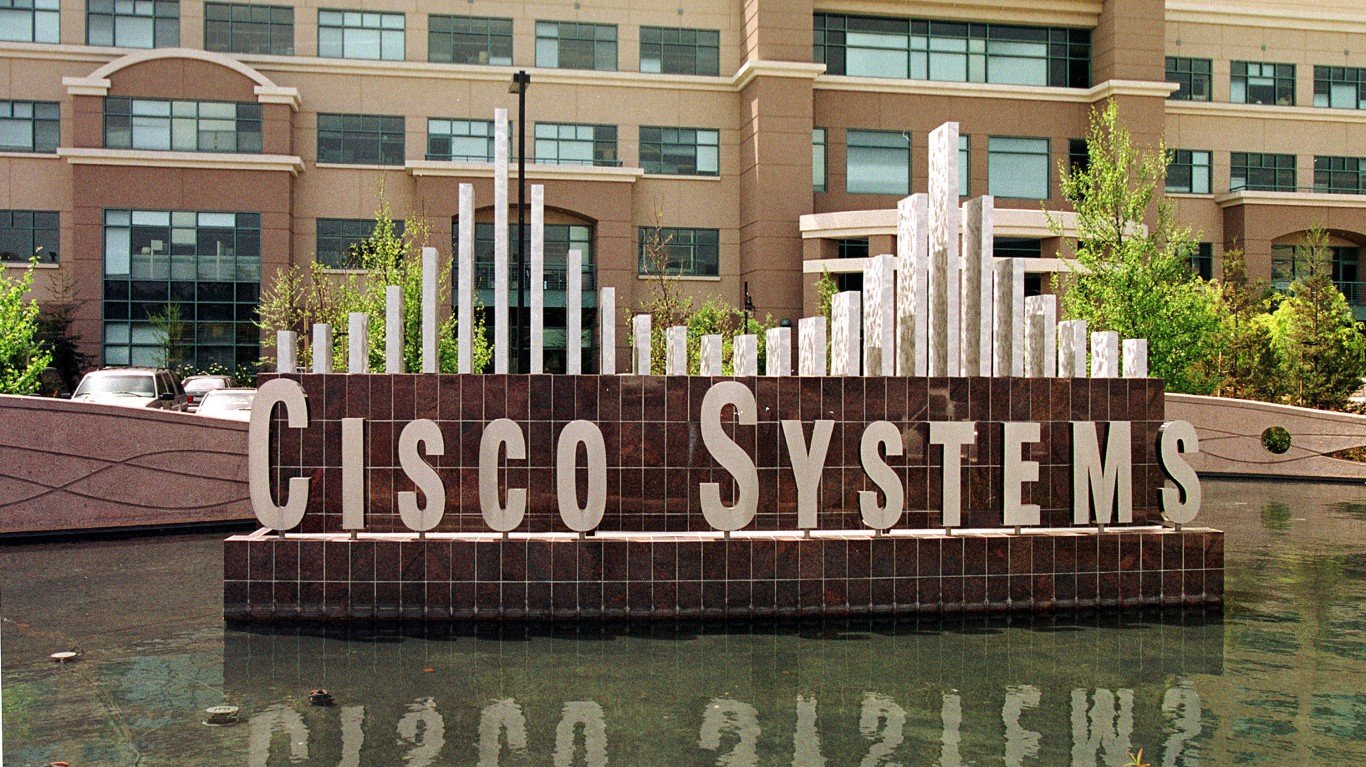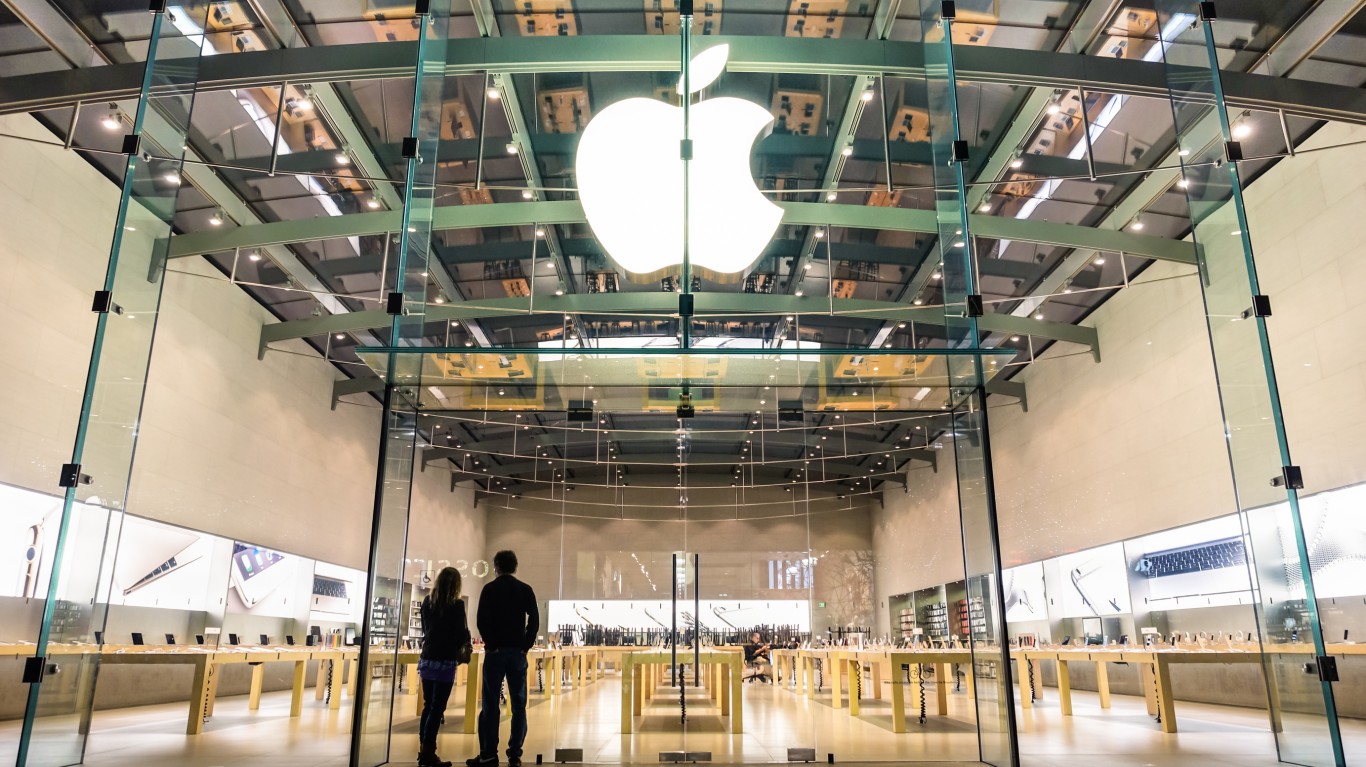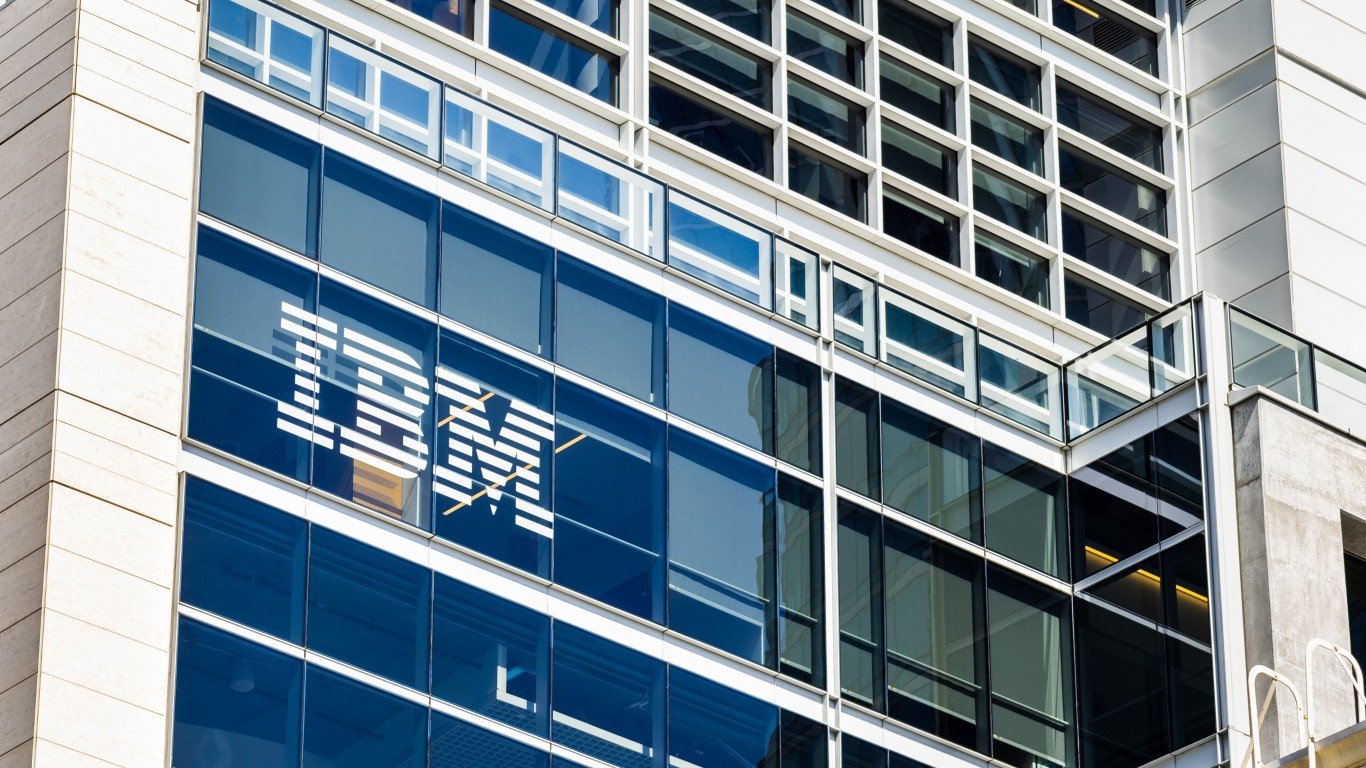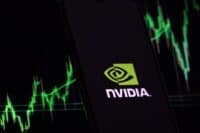

Cisco Systems Inc. (NASDAQ: CSCO) has acted like a champ in 2019. Its shares were up about 30% year to date, one of the top stocks in the Dow Jones industrial average. Its shares have recently hit multiyear and decade highs, while the Dow, S&P 500 and Nasdaq 100 have all achieved all-time highs. With a changing business model in recent years, Cisco is finally living up to its status as a stock to own for a decade. The question now is whether Cisco is a stock to own for the next decade.
24/7 Wall St. first named Cisco to a list of 10 stocks to own for the decade way back in November of 2010. With a new decade approaching, it is important to look backward for reflection and to look forward for guidance and planning. Without adjusting for dividends, Cisco was trading at close to $24.25 when we named it a holding for the decade. There is a history about why looking out for a decade doesn’t have to bring immediate action for investors when the market is at all-time highs. With some very (un)lucky timing in late 2010, Cisco shares immediately took it on the chin with a very bad earnings report right after it was featured as a decade-long holding in 2010.
What helped make Cisco a stock to own for the next decade in 2010 was that it was just about to become a dividend paying stock, and a lot of industry and companywide changes seemed to be brewing. It was also a time when much of the public was only just starting to recover from the Great Recession. U.S. unemployment was well over 9% at that time, and U.S. gross domestic product of almost $15 trillion is far shy of the current $21 trillion GDP of 2019.
With a recent share price of $57.25, there has been a simple gain of about 135% in nearly nine years. If you add in the total $7.00 or so that Cisco has paid in dividends per share since 2011, without even factoring in reinvestment, Cisco’s total return would be closer to 200% since 2010.
While a total return of that size should be nothing to be unhappy about, the current bull market is over 10 years old. The S&P 500 was at 1,219 and the Dow was only 11,350 back in late 2010. Those indexes now are closer to 3,000 for the S&P 500 and almost 27,000 for the Dow. Of those picks for the decade versus today, one has tanked and been a disaster, two would be classified as “nothing burgers” and seven have risen substantially (some seeing exponential gains).
Picking a stock to own for a decade will have vastly different criteria in 2019 or 2020 than way back in 2010. In 2010, the goal was not trying to pick the best performers of the market. It was a different time with much more market and investor unease from the effects of the Great Recession. The goal back then was to pick solid companies that either paid dividends or were about to, as well as companies that had the opportunity to keep raising their dividends or buying back stock or would be acquirers of other companies. It was a time that there was no assurance the bull market from that V-bottom in March 2009 would keep recovering. Many pundits were still sure that a bear market and recession were around the corner. For a serious market reminder, note that the S&P 500’s peak in 2007 was not even recaptured until early in 2013.
Thank you for reading! Have some feedback for us?
Contact the 24/7 Wall St. editorial team.
 24/7 Wall St.
24/7 Wall St.


